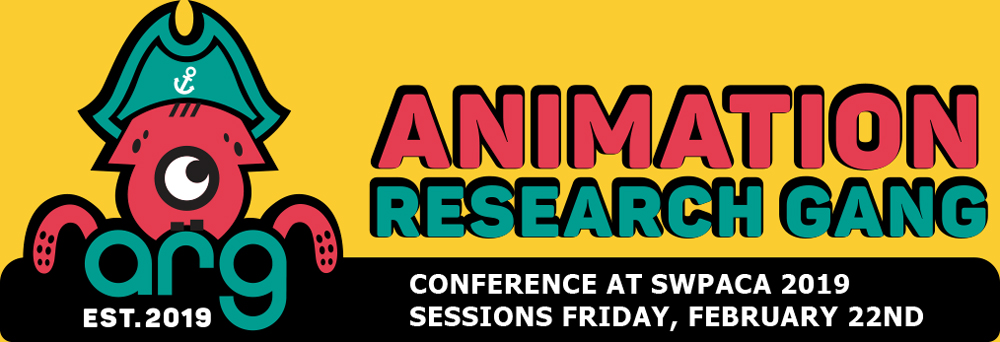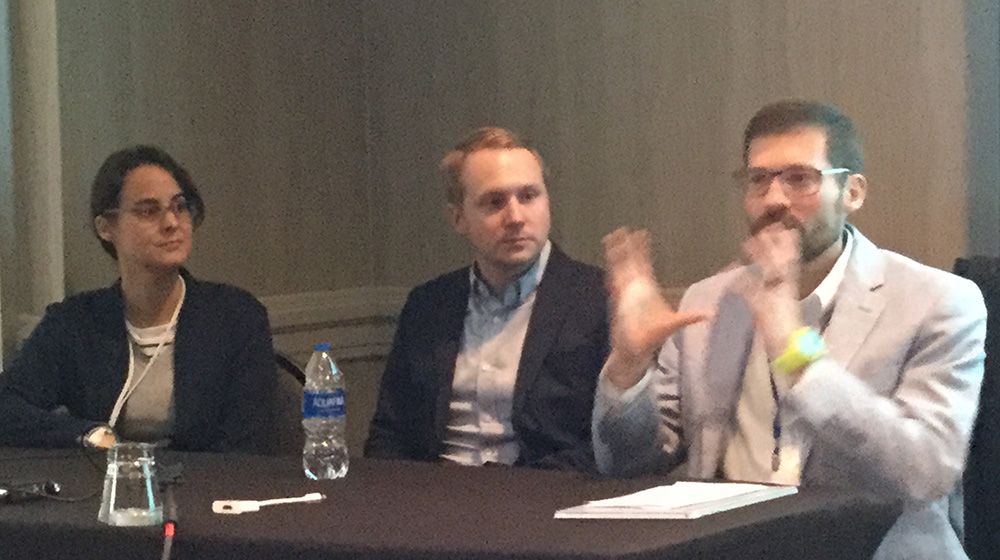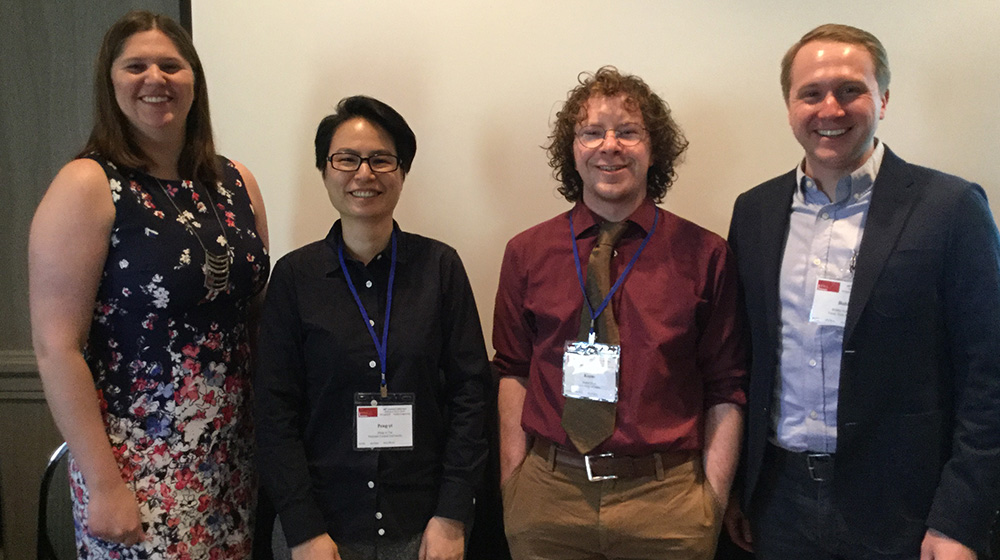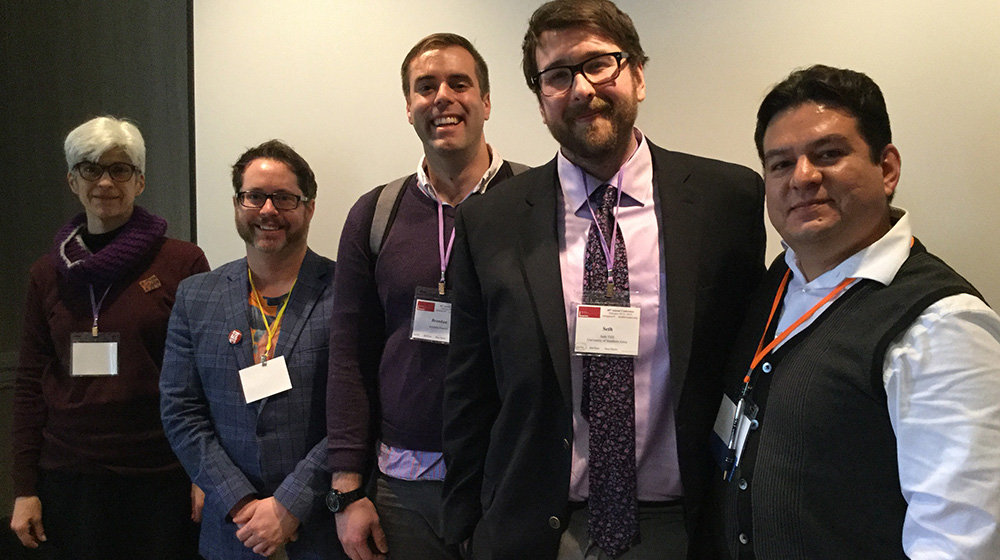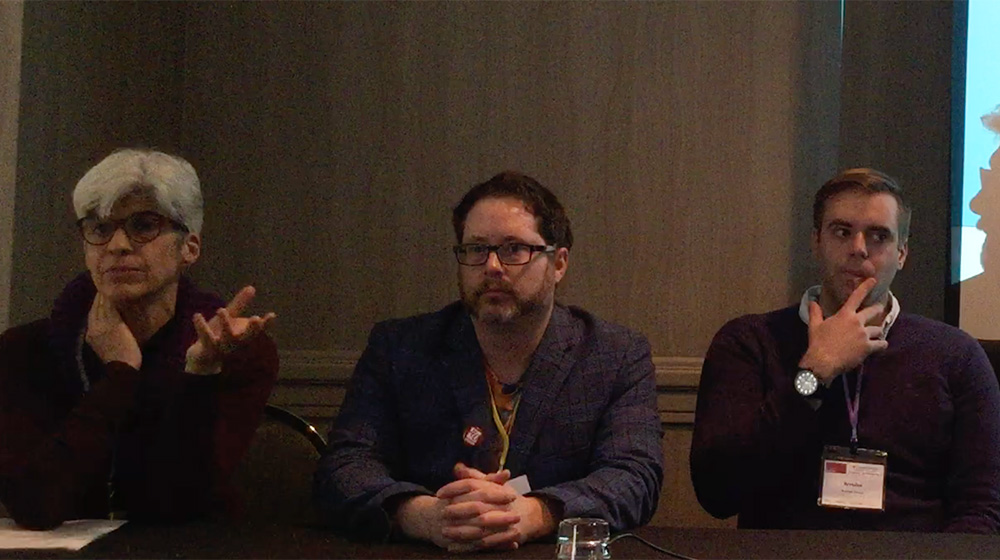Animation Studies 2019. This is just the beginning!
Frozen: Disney Animation in the Age of Disney Conglomerate
Peng-Yi Tai, National Central University (NCU)
Present day Hollywood is awash with film franchises and the chief engineer is no other than the Walt Disney Company. With series of acquisitions of Pixar (2006), Marvel (2009) and Lucasfilm (2012), the new Disney conglomerate has been busy with synergy and diversification of lines of film products. On top of animated classics re-releases and animation-to-live action remakes, Disney now orchestrates many lines of franchises from Marvel’s superheroes, Star Wars, and a steady supply of animated blockbusters produced by the two subsidiary animation studios of Pixar and Disney. Given the new Disney political economy, it requires a reconsideration of Disney animation in light of media conglomeration. First, by incorporating Pixar along with its culture of innovation, Disney animation has come to witness a veritable reinvention. Beginning with Bolt (2008), Disney animation has released seven more animated features with critical acclaim and box office success. Without giving up the good old musical fairytales (The Princess and the Frog, Tangled, Frozen, Moana), Disney now makes animated films with original story (Wreck-It Ralph, Big Hero 6, Zootopia), just like Pixar. Obviously, Disney animation is now a new hybrid of Pixar-style innovation and its own fairytale legacy from Snow White (1939) to the 1990s Disney Renaissance. To understand how the new conglomeration effort helps shape the new Disney animation, the paper will first explore the two diversified lines of Disney animation, namely the fairytale musicals and films with original stories. I will then focus on Frozen, whose overwhelming success illustrates a combination of Pixar-style technical achievement and original story with the classical Disney fairytale musical. In turn, Frozen encapsulates the new Disney animation positioned in the Disney conglomerate for its viability as a new franchise for merchandising and theme park attractions. In all, the paper seeks to examine the effect of franchise-driven Hollywood upon animation more generally and offers some reflection upon the question of repetition.
pytai@g.ncu.edu.tw
:: back to menu
The Pied Piper of Paris: Cross-Species Agency in Pixar’s Ratatouille
One of the central questions of critical animal studies is the ethical portrayal of animal agency, and whether this agency can succeed without reinforcing human hegemony over non-human animals. While much attention is given to the animals that populate zoos, farms, households, and wilderness, relatively little attention is given to animals categorized as pests, who, by their long-established proximity to humans within urban and rural spaces alike, exert arguably far more agency on human life than cats or dogs. The 2007 Pixar film Ratatouille is unique among Disney films about talking animals because it draws overt attention to the fact that the animal characters—rats—are considered such a danger to human life that humans feel at liberty, both in the film and in reality, to kill them on the spot. The film reimagines the story of the Pied Piper in reverse, in which an anthropomorphized rat utilizes a unique language to communicate across the boundaries of species and command a swarm of humans to move as he wishes them, replacing the piper’s music for the chef’s taste. Drawing on materialist and more recent Marxist criticism as well as the work of Anat Pick and Margo DeMello, I will examine the ways that Ratatouille reimagines traditional human-rat narratives, imagery, and history to tell an otherwise conventional story about class, art, and family. I will also examine the aesthetic-ethical implications of the film as a way of simultaneously anthropomorphizing animals while drawing attention to animal cruelty for a young audience.
jkeeneshort@gmail.com
:: back to menu
Have Fun, But Make Sure that You Still Look Pretty: Animating Video Game Adaptations of the Disney Princesses.
The Disney Princess line typically depicts the members of its exclusive royal club standing upright, rigid, and still. While these women might have had to endure hardships on their way to obtaining their royal title, once they are included in the official princess product line, their time of toil has passed. This presents a problem for video game designers who are tasked with animating the Disney Princesses for their appearances in official video games. How do designers square the circle of making inactive figures into active participants in a video game environment? This paper will examine the history of the Disney Princess video games and the various ways that designers and animators tackled this problem in the past as well as an examination of the way that the princesses are depicted in Wreck It Ralph 2: Ralph Breaks the Internet (a film that takes place within a video game world and that breaks many of the traditional rules about how these characters are depicted).
megancondis@gmail.com
:: back to menu
Alchemy of the Face: Fullmetal Alchemist: Brotherhood and Facial Emotion.
This paper utilizes the Japanese anime Fullmetal Alchemist: Brotherhood to evaluate different uses of facial close-up. Within FMA: Brotherhood (as well as many other examples of anime) there are times where facial emotion is presented by a traditional close-up, where animators have attempted to recreate the image of actual facial structure. Just as common, however, is a presentation of emotion carried out through deformations of the face impossible in actual physicality. Drawing heavily on Bela Belaz's theoretical analysis on the face and microphysiognomy and Maya Deren's call for film to reflect an artistic realm outside of reality, the examination reveals that the seriously realistic and absurdly impossible are often juxtaposed in anime, yet do not contradict each other. Instead, the combination of realistic close-up and “super-deformed” or "chibi" aesthetic are employed equally to demonstrate a variety of emotional responses in recognizable, stylized ways. Drawing from examples throughout the series (most notably the character of Alphonse Elric, who has no actual face but still manages to convey facial emotion through his helmet), the paper shows how close-ups, typically reserved to show the real physical apparatus of human emotion, can instead focus on stylistic expressions impossible in our actual life and yet manage to convey to the audience real emotion.
brendandecicio@gmail.com
:: back to menu
Animation and Surrealism in 1930s America: “Porky in Wackyland.”
As an adjective, surrealism is often used to characterize animation’s nature, because of the common use of metamorphosis, the irrational, violence, sexual innuendo, and fantasy, all disguised or wrapped as childish art. There seem to be other intrinsic and historical connections between the medium and the artistic movement: not only did Surrealist artists admire American popular culture, which included cartoon animations, but also the movement has lived on in the films of animators from European Eastern countries, as the inclusion of Jan Svankmajer in many essays on the movement demonstrates. Nevertheless, there is a dearth of scholarship considering the intersection of animation and the Surrealist movement (1924-1959), and much of the attention given to the topic has concentrated on the brief Disney-Dali collaboration in the late 1940s. Because animation belongs in the realm of both art and industry (high art and cultural industry), it was only belatedly understood as a manifestation of modern art. Clement Greenberg’s influential 1939 article “Avant-garde and Kitsch,” a deft attack against the popularized version of Surrealism common in American in the 1930s, drove a wedge between popular art—including Hollywood films—and good modern (i.e modernist) art. This paper concentrates on the analysis of the Warner Brothers’ (WB) cartoon “Porky in Wackyland” (1938) often considered the paradigmatic Surrealist cartoon. Directed by Bob Clampett the cartoon could be read as a rebellious parody of both Disney’s formulaic canon and of the institutionalization and popularization of Surrealism, which would support the cartoon’s classification as a truthful surrealist manifestation. This, in spite of “Porky in Wackyland” being a product of the already well-structured entertainment industry. By concentrating on the analysis of Clampett’s work this paper sheds light onto the relationship between the artistic movement and the American animated cartoon.
jorgelina.orfila@ttu.edu
:: back to menu
Adventure Time: A Tonic to Victor Frankenstein’s Familial Cowardice.
Adventure Time—an animated television program created by Pendleton Ward and first airing on Cartoon Network in April of 2010—presents itself as a visually uplifting children’s show set in a colorful, surrealist land. While the show fuses the classic tropes of feudalist Europe (monarchic social structures, agrarian lifestyles, castles, the chivalric code, etc.) with a modern, post-apocalyptic reality, the story of a boy and his dog—who, as luck would have it, is also his brother—becomes darker over time as it explores increasingly more mature themes. Across 10 seasons, Adventure Time regularly engages with concepts such as: gender equality, identity formation, and fluidity; artificial intelligence; mixed families and the many definitions thereof; quantum mechanics and multi-dimensional reality; mortality; trauma, memory, and transformation; and the role of government and civil design. While there are a number of academic and adult subtexts and themes to explore here, this paper will focus on the ways in which Adventure Time participates in and plays with the gothic genre, while also making regular allusions to a classic gothic text—Frankenstein. In referencing Frankenstein, Adventure Time sheds light on how destructive trauma and new life both have the effect of altering and complicating understandings of “family.” However, unlike Frankenstein and its exploration of similar themes, Adventure Time is instructive in suggesting its viewers—children and adults alike—embrace and welcome into the folds of family all novelties of creation regardless of origin.
eric.howerton@okstate.edu
:: back to menu
The Animated Hosts that Inhabit Disney Parks
Audio-Animatronic hosts uniquely establish continuity within the medium of the theme park—animated figures for illusionary worlds. Of significant importance in the area of Audio-Animatronics is the recurring role of the “host” character that brings parkgoers across the attraction’s threshold—the boundary between the “real” world and “ride” world. This role is a common struturing element for theme park rides and attractions that tasks some character with narrative exposition in order to preface what the parkgoer will subsequently experience. Sometimes this role is filled by a live human actor and other times it appears on a video or audio track. Audio-Animatronics hosts, however, are unique spatial media such as the theme park (but may also include museums, amusement venues, or exhibition spaces). As Disney scholar J.P. Telotte describes, the early era of Audio-Animatronics in Disneyland as the period when the creatives working at WED Enterprises were “endowing three-dimensional figures with technological life” in such a way that the park became “inhabited” by fictional beings (128). When Walt Disney conceived of a physical place themed like his company’s animated worlds he envisioned a place where both human and non-human actors could bring the illusion to life. From opening day at Disneyland in 1955, “walkaround” actors in Mickey and Donald costumes greeted visitors on Main Street U.S.A. while employees playing boat “skippers” toured attendees through scenes of hulking animatronics on the Jungle Cruise. These rudimentary mechanical figures of giraffes and rhinoceroses were a start, but it it wasn’t until the invention of the “Audio-Animatronic” system for the Enchanted Tiki Room in 1963 that Walt believed they were doing animation work akin to their celluloid history. Walt describes this innovation in an interview with Fletcher Markle as “another dimension in the animation we have been doing all our life” (Jackson 98). The technology of Audio-Animatronics opened up new creative possibilities for elaborate show scenes like those of It’s a Small World or detailed performances like Great Moments With Mr. Lincoln. Animatronics translated the principles of traditional animation into physical space to develop a whole new expressive medium that “sends the programmed digital signals—twenty four electronic frames per second” (quoted in Telotte). Performing a media archeology of Audio Animatronics that includes documents such as the 1982 Audio Animatronic Maintenance Manuals, footage from the Walt Disney’s Wonderful World of Color TV specials, interviews with Imagineers, and recordings of park attractions, this paper examines how creators and parkgoers think about expressive and world-building qualities of these animated figures in the Disney theme parks across different decades.
bobby.schweizer@ttu.edu
:: back to menu
Animation Practice: Insights into the Creation of Ephemeral Animated Installation.
In this paper, I reflect upon the creative process of creating an animated installation under constrained circumstances, the results and impact of presenting an ephemeral artwork. The animation practice in focus here is my participation in the Boundary Crossings workshop, in Portland/OR. Boundary Crossings is a biennial institute in animated arts that offers a two-week workshop for artists and graduate students interested in exploring the boundaries of animation in a multiplicity of ways. The director and founder of the program is animator Rose Bond, whose practice and encouragement of diverse forms of animated installations is well known and mostly related to what today is known as projection mapping. At each Boundary Crossings workshop, every participant creates an animated piece according to their practice, but all must address the theme of the workshop, which was then “Space and Identity.” At the end of the two weeks, all of the works are presented in a collective exhibition open to the public. It was an intensive learning process to see how all the projects progressed. The experience indeed increased my awareness of and attention to the viewer’s synergy with the piece. Over the two-week workshop, the most provocative part of the entire experience was its revelation of the challenges we have to surmount, what we learn and discover in the process, how we handle the stress and find solutions, and last but not least, how one’s vision as an artist is shaped as part of a constant development process and transformed by the viewer when interacting with the artwork. Animation is a crucial part of this process, and its popular appeal calls for interaction, facilitating the exchange with the viewer. The entire experience has informed not only my animation practice, but also my teaching process. In addition, the fact that the workshop happened in the United States added peculiarities to the process, inspiring the re-purpose and re-use of objects as well as the animation and content specially conceived for the workshop.
christine.veras@utdallas.edu
:: back to menu
Monster Docs.
Monster Docs is a collaborative research project between animators and physicians seeking to develop a method of communication that both simplifies and clarifies the means through which medical procedures are communicated to patients, specifically children and their parents or caretakers. We seek to achieve this through the use of animated short videos that utilize entertainment, a visually appealing style, and humor that will engage the viewers while educating them about their illnesses and the corresponding procedures. Animation was chosen for this project so that it would allow subject matter that could be sensitive or difficult to be approached with some humor. By using the same tools, software, and methods as current television programs it lends relevance while allowing children to be immediately comfortable with look and style. This paper aims to showcase the creative process behind the production of Monster Docs, including the style of animation, its practical implications, and workflow implementation. By exploring this process future productions can build off the structure of Monster Docs to create more complex, longer form, or visually stylistic animation. A 2D approach using key frame animation combined with character rigs allowed for an expedited process when compared to traditional hand drawn animation or 3D computer graphics animation. Typical animation productions require numerous animators and other artists, however, Monster Docs is being completely animated by myself and so a streamlined workflow had to be developed and implemented.
sean.mccomber@utdallas.edu
:: back to menu
The 2019 Gang!
